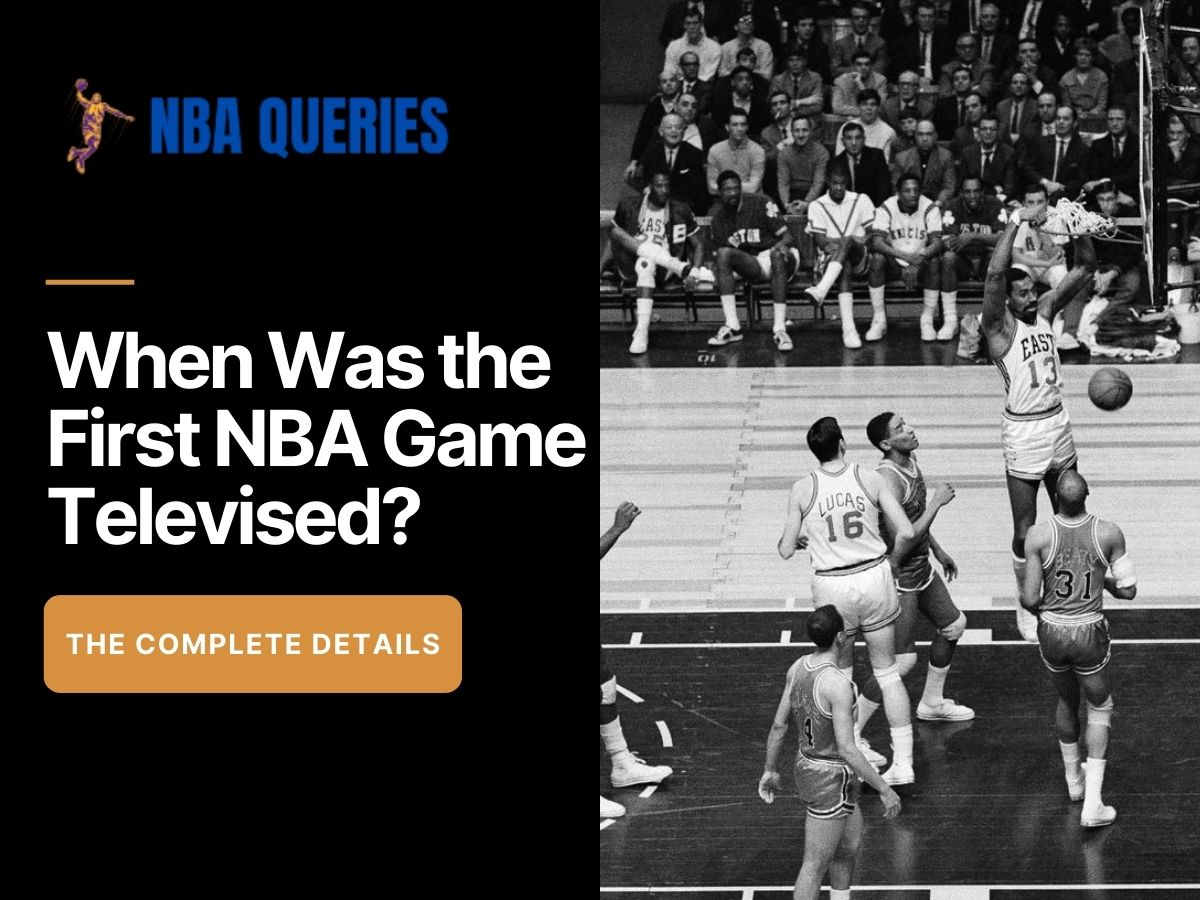The National Basketball Association (NBA) has a rich history of television partnerships in the United States. From its early days to the present, the NBA’s journey from radio broadcasts to national television coverage has been fascinating. In this article, we’ll explore the pivotal moment when the first NBA game was televised and delve into the subsequent evolution of NBA broadcasting.
The Early Days: NBA on Television
DuMont and NBC: The First Steps
In the 1950s, the NBA was still finding its footing as a professional basketball league. Television was a relatively new medium, and the lack of available stations posed challenges. However, during the 1953–54 season, the NBA took a significant step by signing a contract with DuMont, marking the league’s first foray into national television broadcasting. The partnership allowed fans across the country to catch glimpses of their favorite teams and players.
Soon after, NBC stepped in as the NBA’s primary television partner. Starting in the 1954–55 season, NBC began airing NBA games, bringing the excitement of professional basketball to living rooms across America. The partnership continued until April 7, 1962, marking NBC’s initial tenure with the NBA.
ABC Takes the Reins
In 1964, a new player entered the scene: ABC. The network secured the rights to become the NBA’s primary television broadcaster. On January 3, 1965, ABC aired its first NBA game—a matchup between the Boston Celtics and the Cincinnati Royals. This historic broadcast marked a turning point for the league, as it introduced NBA basketball to a broader audience.
Interestingly, during the early years, ABC often incorporated NBA games as segments within its popular anthology series, ABC’s Wide World of Sports. These segments allowed viewers to experience the thrill of basketball alongside other sporting events. However, as the NBA’s popularity grew, standalone game broadcasts became more common.
CBS Takes Over
ABC’s initial tenure with the NBA ended in May 1973, but the league’s journey continued. CBS stepped in as the new broadcast partner, taking over the rights to air NBA games. CBS brought its own flair to NBA coverage, enhancing the viewing experience for fans. The network’s commitment to quality broadcasting ensured that NBA games remained a staple of American television.
The Impact of Televised NBA Games
The advent of televised NBA games had several significant effects:
- Wider Audience Reach: Television allowed the NBA to transcend geographical boundaries. Fans from coast to coast could now witness the magic of players like Bill Russell, Wilt Chamberlain, and Jerry West.
- Player Stardom: Televised games turned players into household names. The iconic moments—whether it was Willis Reed limping onto the court during the 1970 NBA Finals or Magic Johnson’s dazzling passes—became etched in viewers’ memories.
- Cultural Influence: NBA broadcasts became cultural touchpoints. Families gathered around their TV sets, discussing game strategies, cheering for their teams, and celebrating victories.
- Economic Growth: Television revenue fueled the NBA’s financial growth. Sponsorships, advertising, and merchandise sales soared as more eyes tuned in to watch the action.
The Evolution of NBA Broadcasting: From Analog to Digital
CBS Era and Beyond
CBS: The Golden Age
When CBS took over NBA broadcasting in 1973, it ushered in what many consider the Golden Age of televised basketball. The network’s commitment to high-quality production elevated the viewing experience. Here are some highlights from the CBS era:
- Marquee Matchups: CBS strategically selected key matchups for national broadcasts. Whether it was a Larry Bird vs. Magic Johnson showdown or a clash between the Philadelphia 76ers and the Los Angeles Lakers, fans knew they were in for a treat.
- Legendary Commentators: The voices of Brent Musburger, Dick Stockton, and Tom Heinsohn became synonymous with NBA games. Their play-by-play commentary and insightful analysis added depth to the broadcasts.
- Championship Moments: CBS immortalized iconic moments. Who can forget Julius Erving’s gravity-defying dunks or the Boston Celtics’ dominance during the 1980s?
The Cable Revolution
As the 1980s unfolded, cable television revolutionized sports broadcasting. Networks like ESPN and TNT entered the scene, providing more NBA coverage than ever before. Here’s how cable changed the game:
- Expanded Reach: Cable networks reached homes that previously had limited access to NBA games. Suddenly, fans in rural areas could follow their favorite teams.
- Inside Access: Shows like “Inside the NBA” on TNT gave viewers a behind-the-scenes look. Charles Barkley, Shaquille O’Neal, and Kenny Smith bantered, analyzed, and entertained, making post-game shows as exciting as the games themselves.
- NBA on NBC: While CBS remained a strong player, NBC took center stage during the 1990s. The iconic theme music composed by John Tesh became synonymous with NBA Sundays. Michael Jordan’s Chicago Bulls dominated the decade, and NBC captured every moment.
Digital Age and Global Reach
The 21st century brought digital transformation. The NBA embraced streaming services, mobile apps, and social media. Here’s how technology reshaped NBA broadcasting:
- NBA League Pass: Fans could now watch any game, anytime, anywhere. The NBA League Pass allowed subscribers to follow their favorite teams, players, and even catch up on classic games.
- Social Media Blitz: NBA players became influencers. LeBron James, Stephen Curry, and Kevin Durant amassed millions of followers on platforms like Twitter, Instagram, and TikTok. Highlights, memes, and player interactions went viral.
- Global Audience: The NBA transcended borders. International fans tuned in, and players like Yao Ming, Dirk Nowitzki, and Giannis Antetokounmpo became household names worldwide.
The Future: Augmented Reality and Beyond
As we look ahead, technology continues to shape NBA broadcasts. Virtual reality (VR) and augmented reality (AR) promise immersive experiences. Imagine sitting courtside from your living room or analyzing plays in 3D.

